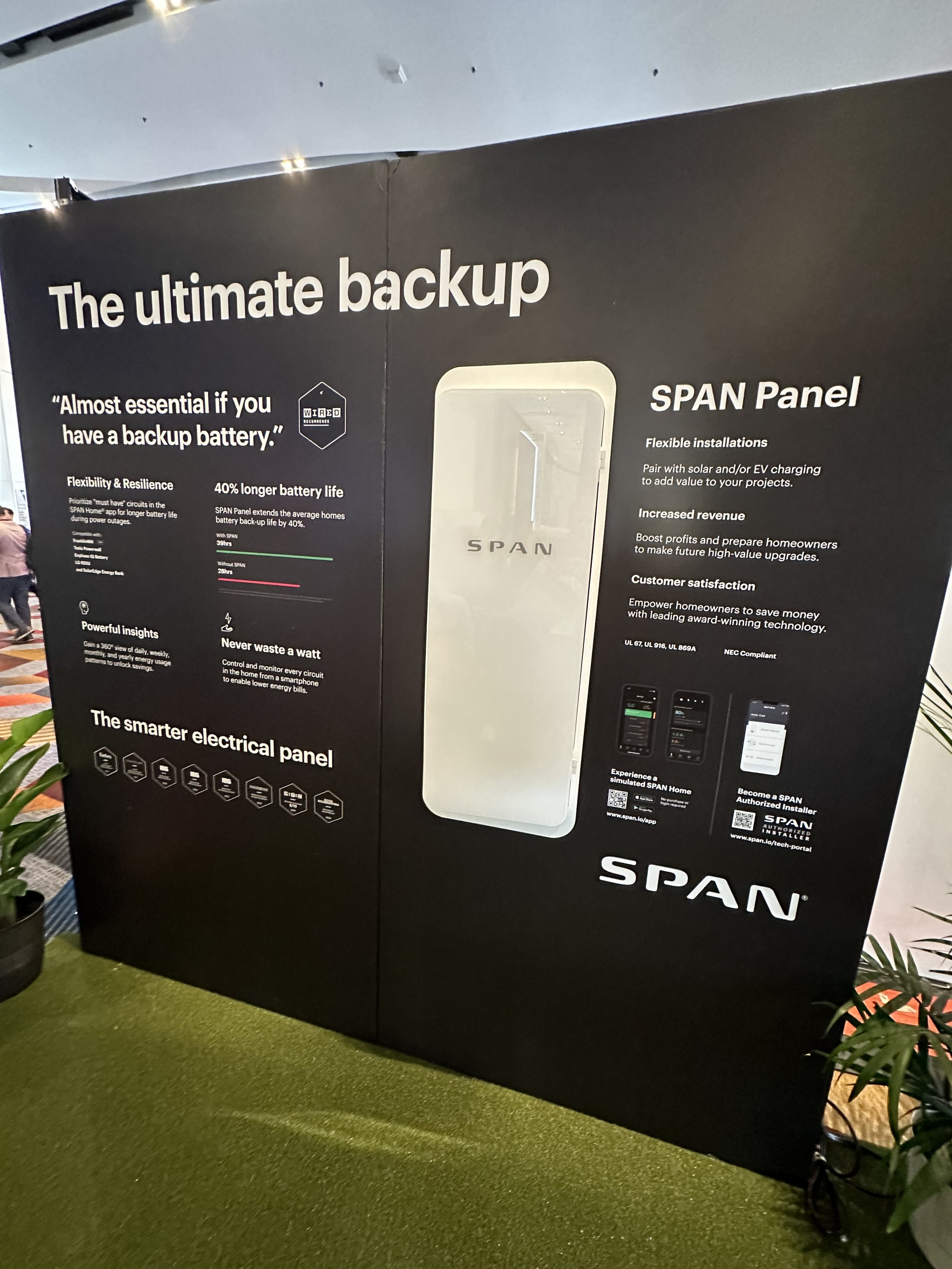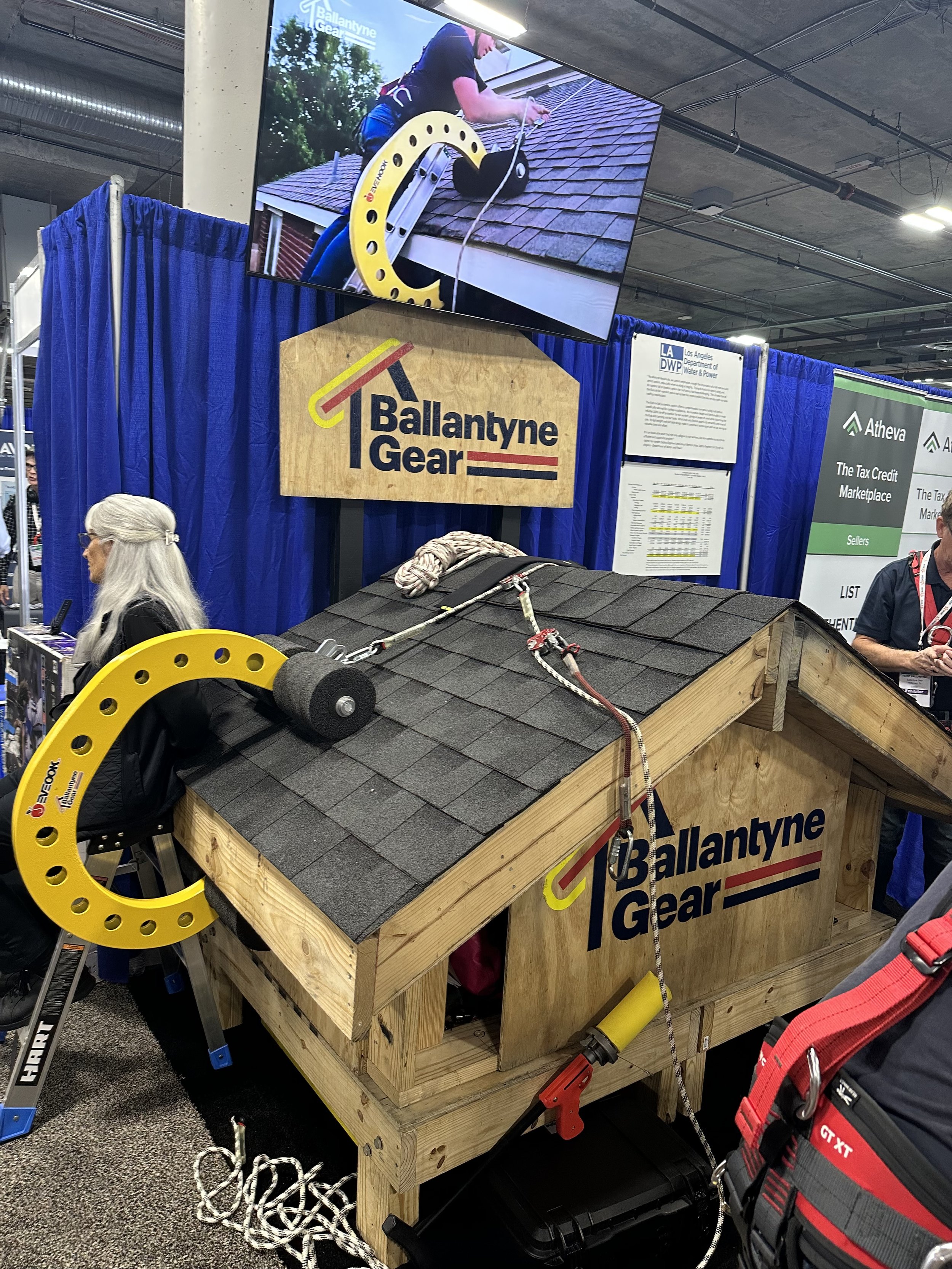An Inspirational Experience at RE+
Have you ever been to a trade show so large that you got lost just trying to find an exit even though you could swear you’ve made your way around the entire perimeter of the expo hall? Have you ever sat in complete befuddlement while listening to investment bankers debate the pros and cons of traditional tax equity structures vs. IRA-era tax credit transferability? Have you ever waited in line at Starbucks for 30 minutes while questioning your sanity and whether or not a 2pm espresso is really worth it (and it totally was, because you wouldn’t otherwise be awake for this panel discussion on risk management)? Is your conception of the renewable energy industry all of sudden unimaginably large and full of incredible possibilities?
If you answered ‘yes’ to these questions, I assume that you had the same experience I did in Las Vegas at RE+ a few weeks ago. If you weren’t there, let me break down my trip for you.
First, I had the privilege to sit just a few rows back for Senator Jon Ossoff’s opening statements to the convention. The impact of the Inflation Reduction Act on our industry was certainly not lost on the audience, as he drew a strong applause when acknowledging the IRA as the most substantial domestic infrastructure bill since the Eisenhower administration. He also praised QCells for their solar module factories in his home state of Georgia - one of the many solar module manufacturers bringing production of their components back to the USA thanks to IRA incentives.
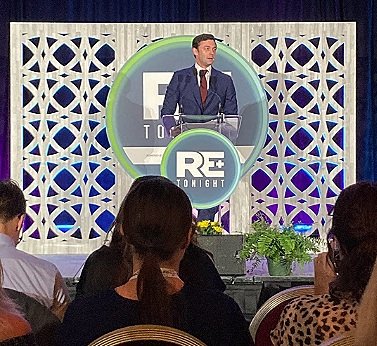
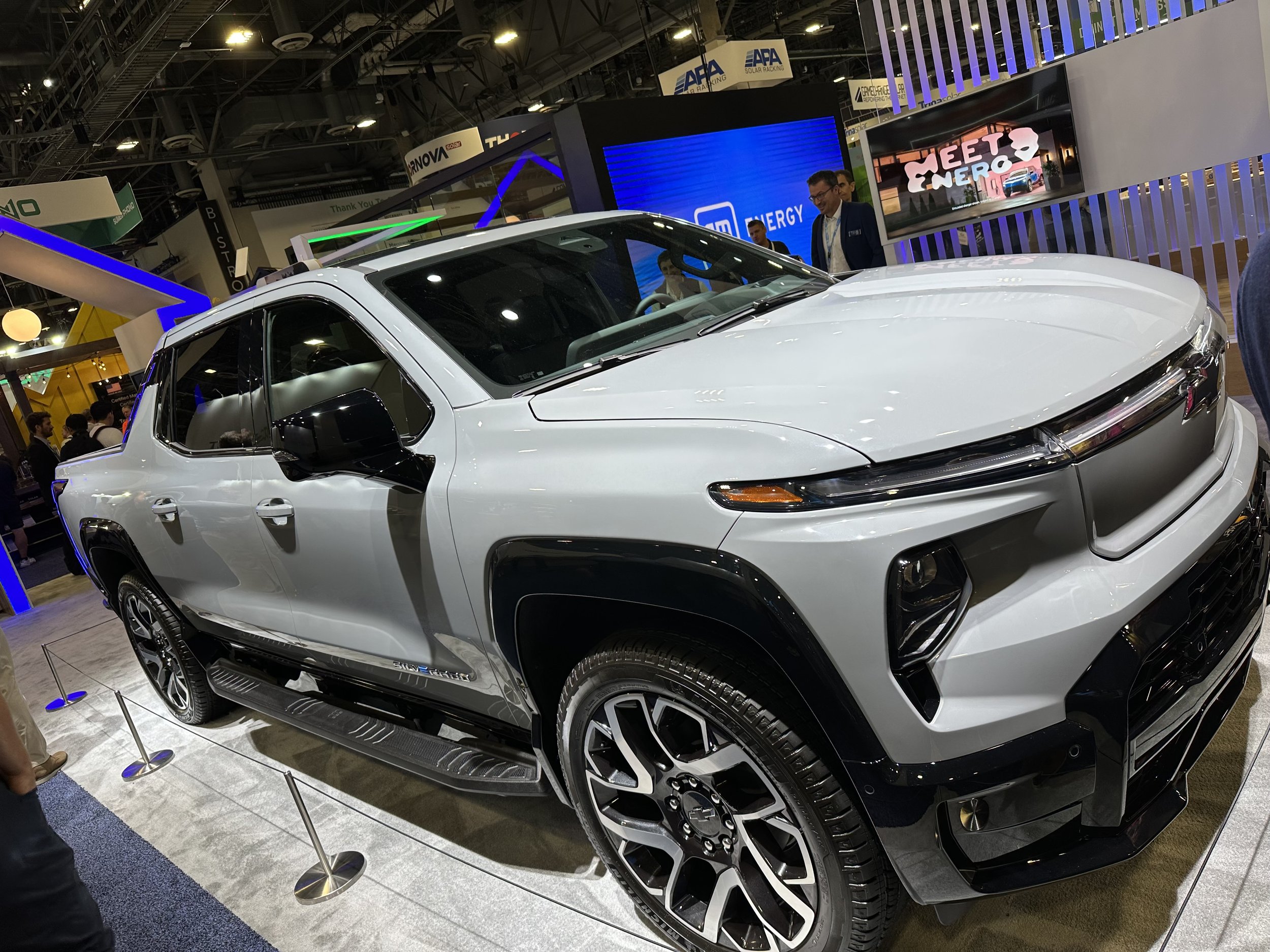
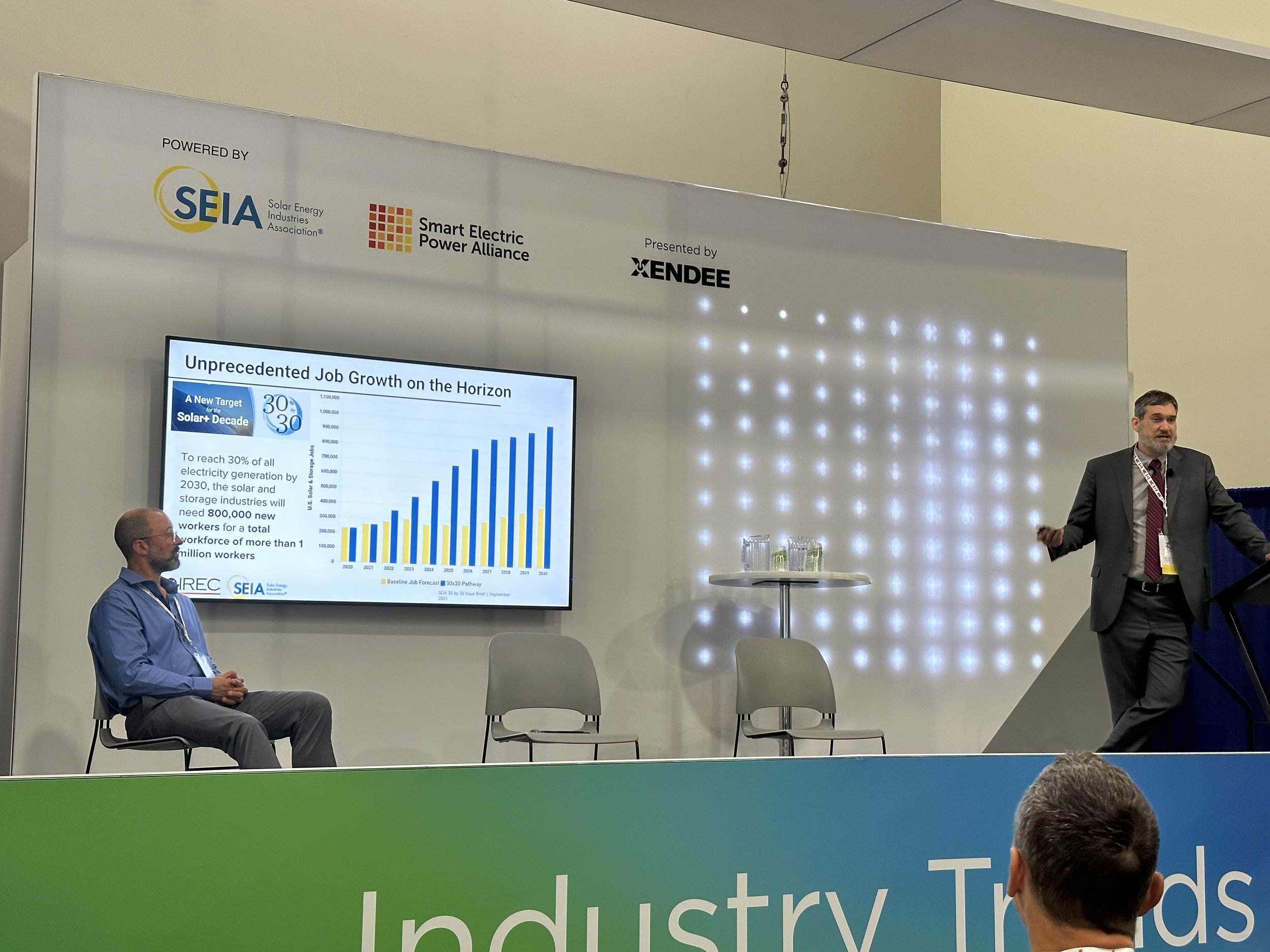
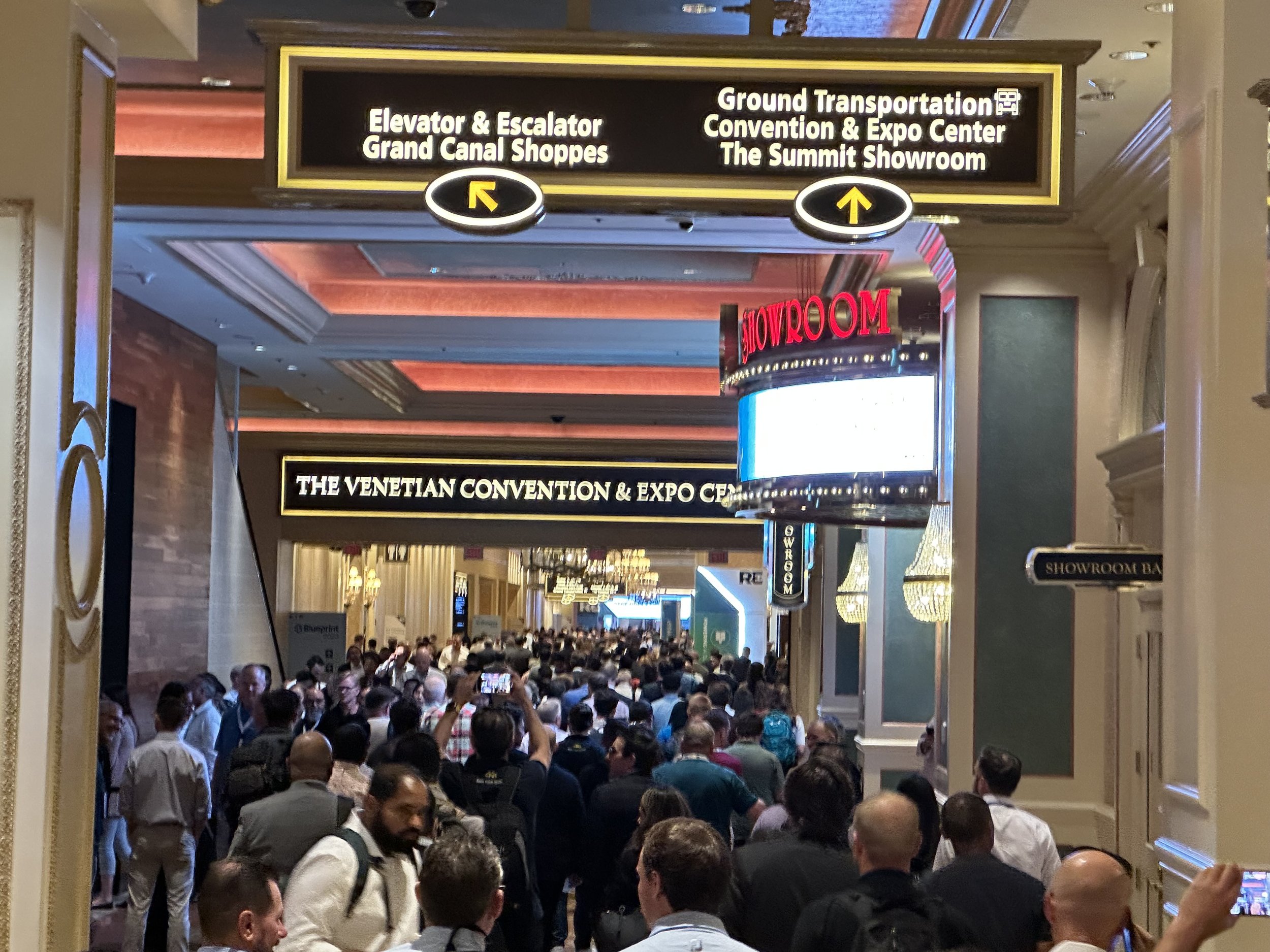
Other speakers at the general opening session included the presidents of both SEIA and SEPA - the two solar/renewable trade organizations behind the RE+ events - as well as Van Jones and Kal Penn, both of whom served in the Obama White House. Kal hilariously took us through his first interactions with the President to how he ended up as Associate Director of White House Public Engagement, and how he worked with diverse groups of climate activists over the Obama/Biden tenure.
Van Jones was equally as engaging and made thoughtful, passionate points to the crowd of thousands renewable energy professionals on why we need to include low and moderate income areas (LMI communities) into our development of renewables:
“You have a status-quo opponent who doesn’t want you to win. They would love to build a backlash alliance against you between polluters and poor people. That is their only hope - to say ‘you guys are a bunch of elitists, a bunch of top-down snobs, who only care about people who eat kale.’ And all the people you left out are going to show up at your hearing, at the ballot box.”
Day two was absolutely jam-packed with presentations and panel discussions. I kicked off the morning with a presentation on the Investment Tax Credit (ITC) - what our customers monetize to recoup 30% of the turnkey project costs - and the Production Tax Credit (PTC). The PTC only pencils for solar on the utility scale, which we don’t do at Eagle, but it was great to get some further insight into it. Next up were some short sessions in the Industry Trends corner, where the audience was presented with a hitch in our Domestic Content giddy-up. While we’re still waiting for the full guidance on how to redeem the Domestic Content tax incentive, the procurement of raw materials needed for production are still predominantly coming from China.
Next, I stepped into the political side of the industry with a presentation entitled, “What the 2024 Congressional Elections Mean for the IRA and Clean Energy.” I walked into this presentation prepared to hear that clean energy would be doomed if a congressional majority decided to defund the IRA, but (unsurprisingly) it’s much more complicated than that. Shawn Affolter spoke on behalf of the Citizens for Responsible Energy Solutions (CRES) - an organization founded to engage Republican policymakers and the public about responsible, conservative solutions to address our nation’s energy, economic, and environmental security while increasing America’s competitive edge. He advocated for market-based renewable energy solutions, and the accompanying slides illustrated that red and purple states are already taking huge advantage of the renewable energy transition and losing the IRA means losing landmark investments in jobs and infrastructure in these areas.
The evening was capped off with a righteous party at a venue I could only describe as a nightclub experience in another dimension about 200 years in the future, complete with a delightfully confusing immersive art exhibit, a live band, indoor ziplines, VR headset game stations, and a ball pit (you know, like the ones at McDonalds except its for adults at a renewable energy conference). RE+ absolutely blew us away with this event!
Here’s the only photo I managed to capture that evening:
Day three somehow got off to a slow start for me, but the expo hall was in full force by the time I made it there. I joined Michael Churchman, our VP of Operations, and we had the pleasure of meeting representatives for several of the products we use, including REC, QCells, Greentech, Lion Energy, Energy Tool Base, Sun Base, and even some companies that do things way outside the scope of a residential, commercial, and industrial solar.
The most interesting presentation to me happened just after I discussed robotic cleaning solutions to utility-scale solar farms with the gentleman pictured above. It struck a chord with the MBA in Finance that I’m currently pursuing, and has since sent me down quite the rabbit hole on the future of financial strategy for solar projects. The presentation was given by Ascend Analytics, a company on the cutting edge of portfolio management for renewable energy developers and asset owners. Much like robotic panel cleaners, the financial strategies discussed don’t directly apply to the business model of a commercial/industrial solar company in a highly regulated market like Alabama, but it has my wheels turning for the future.
The rest of my afternoon afforded me the opportunity to talk directly with a director at the USDA - a federal agency that we work with closely as part of their Rural Energy for America Program (REAP) - where the audience received some clarification on project funding and assurance that the agency is doing everything possible to handle the influx of REAP applications.
I also attended quick talks on how a diverse workforce is a stronger workforce, how a New Jersey solar initiative found success with local workforce development programs, and how renewable energy companies need to shift their narrative around “going green” in rural, conservative areas. While each of these topics has an incredible amount of depth and nuance, I was surprised by how intersectional and relatable they are.
Everybody wants their children and grandchildren to have access to clean water and air. Everybody wants to be able to find good jobs to support their families and wants to see their neighbors and local economy do well. Most people agree that a diversified energy portfolio that can be generated domestically would be a source of strength for their country.
While there is much debate on how we can achieve these goals, three days at RE+ filled me with inspiration and excitement to tackle these big picture issues one day at a time from my sales desk in Birmingham.








